Letter to the Editor
Reclaim the City’s Cape Town occupations are opportunities, not threats
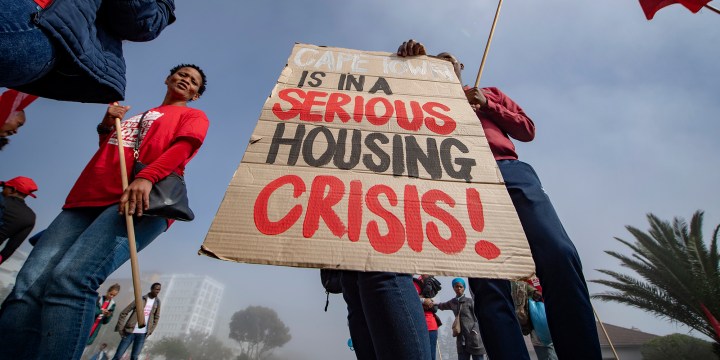
The Cape Town inner-city building occupations should not be dismissed as unlawful reservoirs of criminals and freeloaders. Rather, they should be understood as innovative, legitimate and valid forms of protest that do not seek to destroy, but rather to rebuild and reimagine.
Reclaim the City’s two Cape Town inner-city occupations have frequently been subject to public condemnation as spaces of violence and criminality. Most recently, Cape Town Mayco Member for Human Settlements, Malusi Booi, added to this narrative in his article published in Daily Maverick. Booi argues that through the act of occupying these two spaces, Reclaim the City (RTC) is impeding the city’s efforts to build affordable housing. He claims that, “if these properties are not vacated by all RTC-enabled occupants, redevelopment, including the provision of social housing units, is impossible”.
We are four researchers who have carried out long-term empirical research on the two RTC occupations since 2018. We argue for a more evidence-based understanding of the occupations in order to steer public debate toward a less polemical and more scientifically grounded understanding of a potentially unique opportunity for a more collaborative housing policy.
RTC’s two occupations, which have existed since 2017, are the first of their kind in inner-city Cape Town and two of the largest occupations on well-located land in South Africa. This, along with the many public actions and court proceedings carried out by Ndifuna Ukwazi and RTC, make these two occupations not only “illegal invasions” but also highly symbolic spaces that deserve a more in-depth analysis than simple, polemic denunciations. We would like to shed light on a few of those analytical dimensions to widen the perspective on the occupations and RTC’s project as well as to offer some corrections to Booi’s assumptions. Our insights are based on months-long empirically grounded research.
First, although “invading property” is an illegal act, the Constitution and especially the Prevention of Illegal Eviction from and Unlawful Occupation of Land Act (PIE) protects occupiers and grants legal rights to them after a certain period of occupation. Strictly speaking, this turns RTC occupiers into “legalised occupiers” rather than “unlawful invaders”, which is also supported by the absence of any granted eviction order. Additionally, Booi’s claim that the RTC campaign is “the biggest obstacle to the building of social housing on well located sites” is incorrect considering that there are at least 10 other sites in Woodstock and Salt River alone that have been earmarked for affordable housing.
“Invaders”, “criminals” and “freeloaders” are only a few examples of how RTC occupiers are characterised by politicians and segments of the wider public. However, there is more to say about those who currently live in Cissie Gool House (Woodstock) and Ahmed Kathrada House (Green Point).
Although the composition of the occupations is diverse and house-specific, it largely comprises domestic workers, long-term residents of the respective neighbourhoods who have been evicted, and previously homeless people, among them women, men, children, single-parent households, the elderly and people with disabilities. Additionally, these people are at the lowest end of the economic stratum and do not have financial resources at their disposal.
This creates a high level of vulnerability, and asking them “to leave” as “part of the solution” – as Booi does in his article – implies that this is a viable option for occupiers. This is not only highly cynical but reveals an indifference and refusal to acknowledge the consequences people would face if they left – in fact, the same situations many were trying to escape by moving into the occupations in the first place: literally sleeping on friends’ couches, living on the streets, or taking up the city’s offer of building materials to build a shack which in many cases does not even include an officially sanctioned parcel of land.
Far from being an expression of individual failure, occupiers epitomise the effects of a systemic problem: lack of rent control, tenant rights and financial security measures. This, combined with the absence of accommodation facilities puts vulnerable people in constant danger of losing their livelihoods. And once out, it is incredibly hard to get back in.
Considering the individual trajectories of occupiers provides deep insight into and understanding of how those systemic problems affect people and would be highly worthwhile for politicians to consider. The “sorry situation”, as Booi has described the occupations, is rooted in systemic issues rather than the supposed “criminal character” of the individuals concerned.
Our research has shown that the occupations are far from wholesale reservoirs of “unlawful invaders” and shady characters, as is implied in Booi’s party-political polemic. We fundamentally disagree with Booi’s claim that “RTC’s actions are not ‘protests’ ”. Occupations have long been one of the prototypes of protest actions worldwide. Precisely because of the very degree of organisation and coordination Booi is criticising as “gatekeeping”, RTC’s occupations cannot be regarded as “destructive and desperate attempts with disastrous consequences”.
RTC has managed, not without internal challenges, to consolidate organisational structures that have required intense grassroots learning, rule-making processes and a lot of experimenting, out of which a diverse range of working groups has incrementally evolved. The most important and central forum is the weekly public Advice Assembly (due to Covid-19, now broadcast on the radio), a lively meeting in which occupiers and legal experts offer support and share knowledge on tenants’ rights.
These structures and the external protest actions of RTC thus serve as educational practices for occupiers and others to better understand the rule of law, state structures in general, and ways in which people might exert their rights more effectively. In other words, the occupations can be seen as a pathway toward new models of direct democratic participation and self-governance.
These internal and constructive structures – ignored by Booi – are highly contested and often intensively discussed in the occupations. They can be regarded as what in sociology is called “prefiguration”; the construction of alternative social relations in the present and on a smaller scale. This prefigurative aspect is crucial and carries with it high symbolic value as housing policy is not only about building as many houses as possible, but also about creating and rebuilding a community that enlivens those spaces. As such, the occupations can be regarded as testing grounds, as sites of experimentation that are secured by an organisational structure – a prospect that rarely exists for people in highly precarious living conditions.
This constructive experiment in collective living includes encouraging all occupiers to contribute a monthly fee. Whereas Booi shortsightedly frames this as “rent” – implying that there is profit being made – this money is in fact used to pay for collective expenses and renovations. Repairing the communal kitchen in which occupiers cook for school children, resources for the communal vegetable garden and replacing leaking water pipes are only a few examples of how this money is used.
The management of finances is part of the learning process through which RTC seeks to enhance group solidarity, increase mutual respect, deepen knowledge and to improve its internal organisation.
To summarise: the occupations should not simply be dismissed as unlawful reservoirs of criminals and freeloaders. Rather, they should be understood as material and symbolic reminders of the deep societal inequality that still prevails in South Africa. They are innovative, legitimate and valid forms of protest that do not seek to destroy but rather rebuild and reimagine. And significantly, they relocate the issue of affordable housing to the heart of the city.
We have observed a distorted, generalised and exaggerated portrayal of the occupations as lawless spaces of violence. The occupations are not immune from the social pathologies of South African society; violence does exist within these spaces, particularly in the form of gender-based violence. They are not tightly sealed and thus also exhibit some characteristics of the wider society that are highly undesirable.
How naïve would it be to think that the social problems of vulnerable people, as well as their fears and addictions, would not exist within the occupation?
In response, RTC is trying to develop self-governance structures that deal with, reduce and prevent criminal behaviour. Ignored by media and official accounts of the occupations, different forms of internal security structures have been established (eg, the disciplinary committee), numerous workshops have been arranged with other partner organisations, moderated self-help groups have evolved, and frequent open conversations are happening that aim to prevent further acts of violence, but also function as safety nets after incidents. Violence, in our view, is therefore used primarily as a politically motivated discursive tactic to discredit RTC. It also applies a double standard because violence does not seem to be a problem for the City of Cape Town’s Temporary Relocation Areas such as Blikkiesdorp and Wolverivier, which experience regular incidents of violence.
Space matters: not only regarding new housing developments, but also regarding protests. The combination of the well-located and sustainable occupations makes them simultaneously unique and inconvenient. No parties involved would argue that land invasions are an “acceptable alternative” or solution, but rather a necessary and required means of protest aimed at building up political pressure.
Examples from other parts of the world (such as in Porto Alegre, Brazil or the Hafenstrasse in Hamburg) show that transitions from protests into diverse forms of successful cooperative housing projects are far from being utopian. When approaching protests with a wider perspective and real transformative intentions, perceived obstacles can be turned into creative potential.
In such a situation of crisis, in which every opportunity of inspiration should be taken, we ask ourselves: why does the city not use this as an opportunity to prove its commitment to ending spatial apartheid planning by realising affordable housing projects on one of the many other well-located sites?
Why not regard the occupations as opportunities to learn from those currently developing communal living structures? Often, appreciating new perspectives can reveal pathways and innovative ideas that have not been visible before. Solutions need open minds rather than hardened and inaccurate polemics. DM
Björn Herold (MA) is a PhD candidate in Social and Cultural Anthropology at the University of Konstanz, Germany. He is interested in social movement theory, (critical) urban theory, infrastructure, space and philosophy, He is currently writing his doctoral thesis about Reclaim The City for which he conducted 11 months of research in Cape Town. His research focus is the interconnection between a political movement and the everyday lives of participants.
Matthew Wingfield (MA) is a PhD candidate at Stellenbosch University. He has done research on social movements, rights-based activism and representation. His current research is focused on the Philippi Horticultural Area, looking at conceptions of community engagement and the politics of natural resources.
Margaux De Barros (MA) is a doctoral student in political sciences at the Université libre de Bruxelles and at the Institute of Social and Political Studies (IESP) of the State University of Rio de Janeiro. Her research focuses on political commitment in urban social movements in Rio de Janeiro and Cape Town.
Christine Borgvold Naaby Hansen completed her MSc at Utrecht University in June 2020. Her interests are broadly centred around political mobilisation, urban citizenship and civil society.





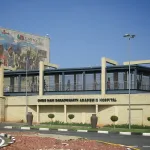
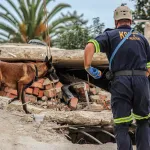
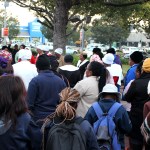
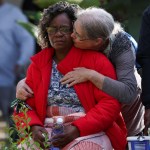










It’s crazy that people want to live in the CBD of the most expensive city in the country.
As soon as you put low cost housing there people who don’t fit that bracket will move out of the city and form a new one.
This template has played out in Durban. As a city it’s now just a collection of low rent city apartments and budget retail.
Umhlanga is now the new ‘Durban’ and quite honestly is spectacular in terms of the development happening there.